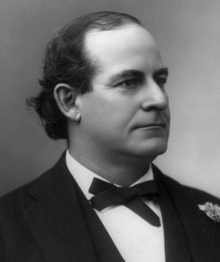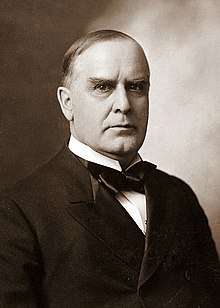1896 United States presidential election in South Dakota
The 1896 United States presidential election in South Dakota took place on November 3, 1896. All contemporary 45 states were part of the 1896 United States presidential election. Voters chose four electors to the Electoral College, which selected the president and vice president.
| ||||||||||||||||||||||||||
| ||||||||||||||||||||||||||
| ||||||||||||||||||||||||||
| Elections in South Dakota |
|---|
 |
South Dakota was won by the Democratic nominees, former U.S. Representative William Jennings Bryan of Nebraska and his running mate Arthur Sewall of Maine. Two electors cast their Vice Presidential ballots for Thomas E. Watson.
Bryan won the state by a very narrow margin of 0.22 percentage points, becoming the first Democratic presidential candidate to win the state. Bryan would later lose the state to Republican incumbent president William McKinley four years later and would later lose the state again to William Howard Taft in 1908.
Results
| 1896 United States presidential election in South Dakota[1] | |||||
|---|---|---|---|---|---|
| Party | Candidate | Votes | Percentage | Electoral votes | |
| Democratic | William Jennings Bryan | 41,225 | 49.70% | 4 | |
| Republican | William McKinley | 41,042 | 49.48% | 0 | |
| Prohibition | Joshua Levering | 683 | 0.82% | 0 | |
| Totals | 82,950 | 100.00% | 4 | ||
| Voter turnout | — | ||||
References
- Dave Leip's U.S. Election Atlas; Presidential General Election Results – South Dakota


